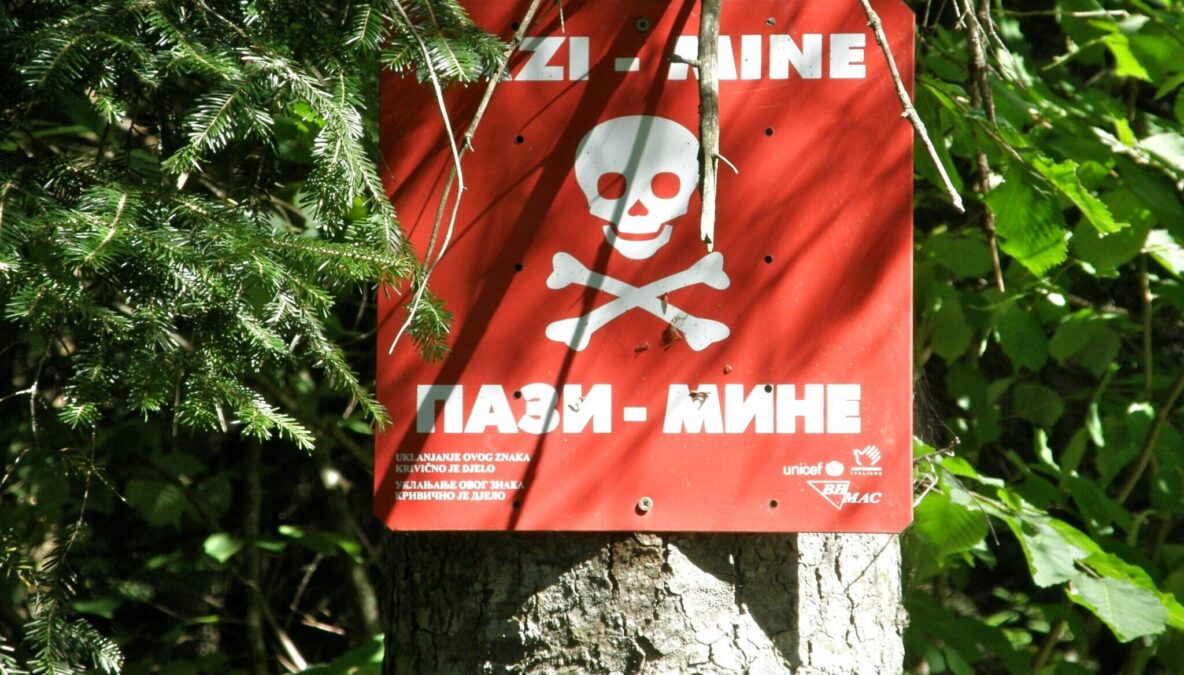An anti-personnel mine is an explosive device designed to injure or kill people. It is widely banned under the Ottawa Treaty due to its long-term threat to civilians. However, some NATO countries are considering leaving the treaty. Why is this happening? And do these mines have any strategic advantages?
What is the Ottawa treaty?
The Ottawa Treaty, or the Anti-Personnel Mine Ban Convention, prohibits the use, stockpiling, production, and transfer of anti-personnel mines. These mines were first widely used in World War II.
The treaty was signed in 1997. Major powers, like the United States, China and Russia, are not parties to the treaty. By March 2025, 165 states had ratified or acceded to the treaty.
The U.S. has neither manufactured nor transferred anti-personnel landmines since 1997, but never signed the treaty, as the Pentagon sees them as vital for South Korea’s defence. However, in 2024, Biden approved sending mines to Ukraine despite its treaty membership.
Russia continues using AP mines, especially in the war with Ukraine. The UN estimates the Ukraine is now the most mined nation in the world.
Do anti-personnel mines have strategic advantages?
The Defense Technical Information Center of the USA released research in 2003 providing the military perspective on these mines:
- Inflicting personnel casualties is a key war objective, and mines play a major role. Tactical minefields, combining anti-tank and anti-personnel mines, block, turn, disrupt, or fix enemy forces.
- They prevent the easy removal of anti-tank mines, which foot soldiers can otherwise destroy.
- Protective minefields secure high-value assets, such as ammunition points, fuel depots, and command facilities.
- Mines act as psychological and strategic barriers, discouraging enemy movements.
- They reduce the troops needed for defense, freeing forces for other tasks.
- Cheap to produce and deploy in large numbers, mines require little maintenance and remain a long-term threat.
And what about the disadvantages?
Before the Ottawa ratification, the Parliamentary Assembly of the Council of Europe released a report outlining the harms of these mines. Some of them include:
- Civilian Casualties: Mines remain active long after conflicts end, causing injuries and deaths among civilians, including children. According to the Landmine Monitor 2024 report, civilians accounted for 84% of the 5,757 recorded landmine casualties in 2023. Children represented 37% of these civilian casualties.
- Difficult and Costly Removal: Clearing mines is slow, dangerous, and expensive (up to $1,000 per mine), compared to their low deployment cost.
- Hindrance to Post-War Recovery: Contaminated land cannot be safely used for farming, construction, or development.
- Mines violate humanitarian principles.
Are mines being used in Ukraine?
Russia has used anti-personnel mines extensively in Ukraine since launching its full-scale invasion of the country in February 2022. According to the Ukrainian Ministry of Defense, since the invasion, 1,083 civilians in de-occupied territories have been affected by Russian anti-personnel mines. Even though Ukraine is a part of the Ottawa treaty, the USA delivered mines to Ukraine to help fight the Russian invasion.
Why are some countries planning to withdraw?
Like many other treaties, the withdrawal from the Ottawa Convention does not take effect immediately. A six-month waiting period precedes the expiration of a withdrawing State’s obligations. Additionally, a State party’s withdrawal cannot take effect while it is engaged in an armed conflict. Considering this, the Russian invasion of Ukraine and strategic benefits of the mines, the Baltic States and Poland are planning to withdraw from the Ottawa Treaty. “Military threats to NATO member states bordering Russia and Belarus have significantly increased,” said a statement released by the four countries on March 18. According to the Lithuanian Ministry of Defense, the psychological effect of using anti-personnel mines is also very important – the knowledge that anti-personnel mines may be used will increase psychological pressure on enemy soldiers and weaken discipline on the battlefield. The defense ministers of the four countries stressed that despite plans to leave the treaty, Poland and the Baltic states are still committed to international humanitarian laws, “including the protection of civilians during armed conflict”.
The UK also started reacting to the Baltic States and Poland’s plans. On March 24, Policy Exchange, a British right-wing conservative think tank, released a paper which calls for the Government to withdraw from the Convention on Cluster Munitions and the Ottawa Treaty, arguing that both now serve as an impediment to greater allied security against Russian aggression. “After a number of NATO members have recently signalled their intent to pull out, the UK must show solidarity with these front-line states by doing the same.”
In response to the evolving military threat from Russia, Finland is also planning to quit the treaty.
Is there a threat to the Mine Ban Treaty?
On March 18, Action on Armed Violence (AOAV), a non-governmental organisation based in London that conducts research, also released a statement on Poland and the Baltic nations’ withdrawal plan. The organization said that the decision “marks a grave setback for global humanitarian disarmament. Additionally, the potential for Finland to follow suit only heightens concerns that the erosion of the treaty could spread across Europe.” AOAV urges Poland, Lithuania, Latvia, and Estonia to reconsider their decision.
The International Campaign to Ban Landmines (ICBL) also took action to stop countries from leaving. The organisation released a briefing paper, which provided a framework for countering the key security-related arguments being used to promote withdrawals from the treaty. Additionally, it started an action “Send One Email to Stop Withdrawals from the Mine Ban Treaty!”
However, none of these countries has signed to withdraw from the Ottawa Treaty, and leaving it would be a long process. Therefore, each country’s final decision and the potential consequences remain uncertain.
[jetpack-related-posts]
